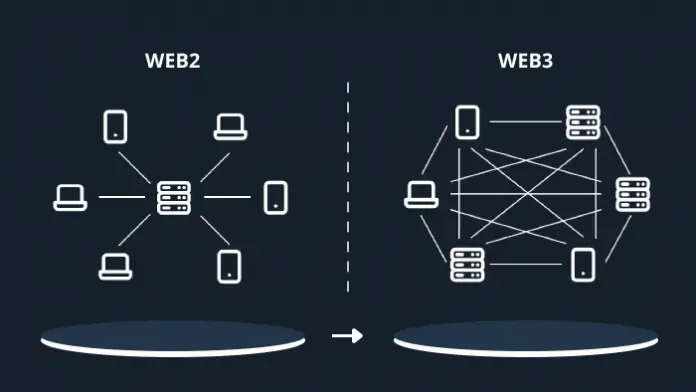The most recent iteration of the Internet, known as Web3 technology, is based primarily on the principles that underpin blockchain and machine learning technology.
The primary objective of the Web3 project is to develop better-connected websites and improve Internet technology’s overall privacy and safety.
In this post, we will discuss the primary distinction between web2 and web3 technology and the foundational aspects of Internet technology.
Be sure to read this post through if you are interested in learning more about that or would like to reap the benefits of the most recent technological advancements.
Let’s drive-in:
What is Web3 Technology?
The World Wide Web is currently in its third generation, and that generation, known as Web3, is altering how people interact with computers. This article will discuss Web3 technology and how it will change how people use computers in the future.
Web 3.0 technologies go beyond the capabilities of traditional web development by utilizing peer-to-peer networking, more sophisticated methods of data storage, and native applications for mobile devices.
The technology known as blockchain underpins a distributed network known as the web. Web3 marketplace development represents a new paradigm for the Internet, which emphasizes giving users increased visibility and control over the data that pertains to them.
The Web3 Foundation has been active in several different project areas. For instance, the development of an open-source framework for the construction of decentralized applications; the creation of a peer-to-peer protocol for the transfer of value; and the planning and design of a system to encourage interoperability.
What Is Web2 Technology?
The Web2 technology represents the second generation of the Internet and is characterized as a medium that encourages collaboration, interaction, and movement. Since 1996, people have been utilizing it.
Web2 technology has made it possible to have a more individualized experience while surfing the web. Websites have also become more interactive and user-friendly, and they can provide more information to search engines about the content of their sites.
Because Web1 was neither interactive nor dynamic, there was no two-way communication possible between the user and the website. This rendered interactive features of Web1 unnecessary. This indicates that there were no conversations between users of the website and site visitors or operators.
Technology Comparison Between Web2 and Web3 and Their Key Differences
The following is a list of key distinctions between Web2 and Web3 technology:
Communities
Social participation and the development of communities are at the heart of Web2’s mission—web3 places a greater emphasis on semantic learning, decentralization, and the agency of individual users.
Data
The information in this data pertains to the connection in web2. On the other hand, the utilization, exchange, and control of data are going to be handled by businesses.
Web3 uses artificial intelligence to provide accurate results at a faster rate, in addition to providing current information at all times.
The term “web2” can also be referred to as a “participatory social web.” The fact that users can now take part in the production and distribution of responsive content opens up opportunities for collaboration. As a consequence of this, web2 plays an essential role in the process of fostering the development of a brand-new online community. Users of Web2 can perform free data filtering, which enables them to collect information and organize it collectively.
Web Architecture: Centralized vs. Decentralized
The feature of the Semantic Web is referred to as Web3 by its abbreviation. It implies that Web3 can assist people in understanding what words mean. Consequently, web3 content can now be easily discovered, exchanged, and analyzed by people and machines.
Web2 utilizes HTML5, CSS3, Javascript, and AJAX to develop websites. Machine learning, artificial intelligence, and decentralized protocols are all used in Web3, which differs from Web2.
Applications that run on web servers make up the Web 2.0 iteration of the Internet. Applications that AI and machine learning power can function using Web3 technology.
These servers are susceptible to access, modification, or removal by any entity controlling the website. This includes corporations, governments, and even hackers. In addition, these organizations have the authority to deny access to their services, which may or may not be permissible under the law. IPFS and decentralized hash tables, both of which are related technologies to the blockchain, have the potential to create a content management system. This makes blocking and taking someone down significantly more difficult.
With Web3, users can connect, engage in secure commerce, and share data without depending on a third party. Instead of relying on a centralized authority or bank, the peer-to-peer (P2P) technology that Huobi uses allows users to transact directly with one another. Transactions are handled, and the network distributes tokens.
Closing Remarks
The most important takeaway is that the electronic database known as Web2 is widely used and controlled by businesses that offer services in exchange for users’ personal information.
On the other hand, Web3 refers to decentralized applications based on blockchain technology. These applications allow anyone to participate without requiring them to sell personal data.




